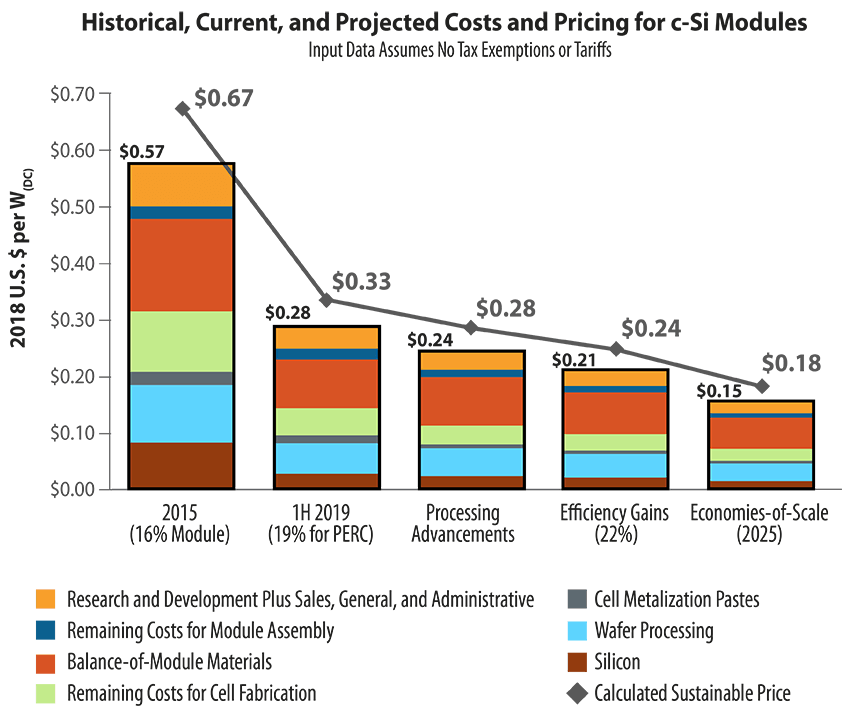We live in a world of search engines, video games and e-commerce. Every product and piece of information is at our fingertips. This is stimulating an explosion of data centers where the hardware that makes all this possible operates. These centers draw almost unimaginable amounts of power.
The power demand isn’t going to slow any time soon. The advent of cryptocurrency and generative AI is creating an exponential rise in demand for more data centers and more electricity. We’re witnessing a revolution in electric cars, trucks and appliances. Electric companies will have to meet the demand while moving us toward a carbon-neutral world. We can do this by taking three key steps.
The first step is to accelerate the ongoing revolution in renewable energy. In 2022, 83% of all new energy added globally by utilities was renewable, and renewable energy is expected to surpass coal by 2025.
While the accessibility of renewable energy has increased, the better news is that costs continue to decrease. Solar manufacturing costs drop every year and will only get more competitive with fossil fuels.

Wind projects have decreased in costs by 40% over the last decade. The Inflation Reduction Act is an essential step in the right direction with an estimated $1.2 trillion in incentives for clean technology by 2032. Clean energy is not only better for the planet, it’s becoming cheaper by the day.
Unfortunately, the sun doesn’t always shine, and the wind doesn’t always blow. That’s why advancing battery storage is a key bridge to a clean energy future. When I served on the board of Tesla in 2010, the energy cost for batteries was over $1,100 per kilowatt-hour. This was part of why electric vehicles were prohibitively expensive. Just ten years later, the cost of battery storage had dropped by an order of magnitude to $137 per kilowatt-hour. Tesla has cut electric vehicle prices five times in 2023 alone.
Battery manufacturers are driving decreases in battery costs that are leading to a revolution in power storage. Tesla’s energy/battery division is a prime example, deploying 3.98 gigawatt hours of power storage in the third quarter of 2023 alone. That’s enough to power all the homes in Chicago and LA combined. Expect to see some form of battery storage in most homes, offices and schools in the coming decades. Batteries are rapidly becoming a cheaper alternative to natural gas or nuclear, and they are a lot easier to permit next to a school or apartment building.
The toughest problem to solve will be building a resilient, multi-directional grid that will connect this new mosaic of storage and energy devices. This new grid will enable utilities and homeowners alike to generate power and store it when the wind is blowing and the sun is shining, as well as to transport it to the areas that need it the most based on the time of day. This will enable us to avoid building excess capacity and help us solve for those critical times of peak energy demand (both winter and summer) by saving up power when it’s cheap and using it during peak demand.
The electrical power grid is the largest and most important machine in the world. The Internet wouldn’t function without the power grid. Transforming the grid from a one-way transmission system to a multidirectional grid will enable everyone to play a role in slowing climate change.
Renewables, batteries and a new, multi-directional grid won’t solve all of our problems. We will still need to develop green hydrogen for energy-intensive industries like steel and cement. Over time, we will need more nuclear energy plants because of their efficiency and baseload power. California’sPacific Gas and Electric Company estimates that electricity demand will increase by 70% over the next 20 years. Bill Gates and Elon Musk think it will be closer to 2–3 times that. But, in a race against climate change, renewables, batteries and the grid are the three best tools we have today. The world’s utilities are our best chance to help us win that race.
[Anton Schauble edited this piece.]
The views expressed in this article are the author’s own and do not necessarily reflect Fair Observer’s editorial policy.
Support Fair Observer
We rely on your support for our independence, diversity and quality.
For more than 10 years, Fair Observer has been free, fair and independent. No billionaire owns us, no advertisers control us. We are a reader-supported nonprofit. Unlike many other publications, we keep our content free for readers regardless of where they live or whether they can afford to pay. We have no paywalls and no ads.
In the post-truth era of fake news, echo chambers and filter bubbles, we publish a plurality of perspectives from around the world. Anyone can publish with us, but everyone goes through a rigorous editorial process. So, you get fact-checked, well-reasoned content instead of noise.
We publish 2,500+ voices from 90+ countries. We also conduct education and training programs
on subjects ranging from digital media and journalism to writing and critical thinking. This
doesn’t come cheap. Servers, editors, trainers and web developers cost
money.
Please consider supporting us on a regular basis as a recurring donor or a
sustaining member.
Will you support FO’s journalism?
We rely on your support for our independence, diversity and quality.










Comment